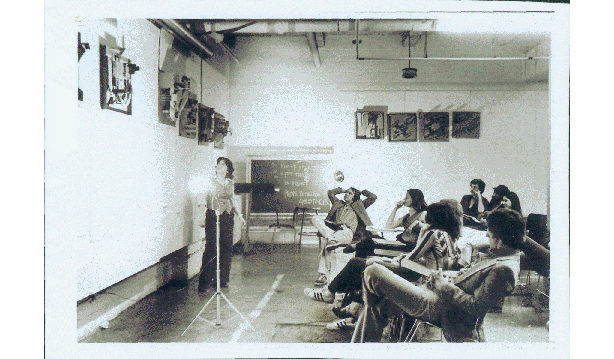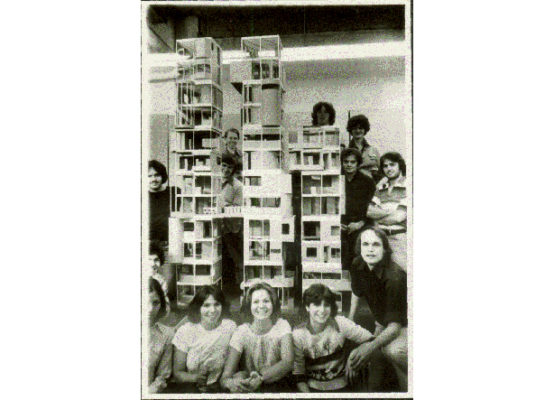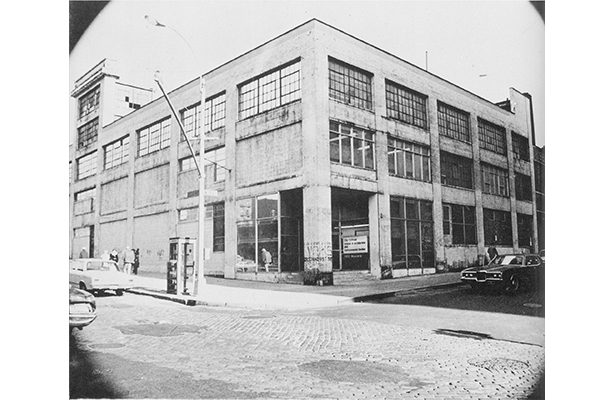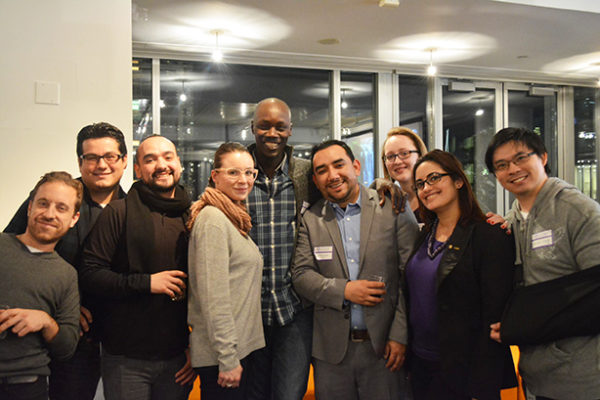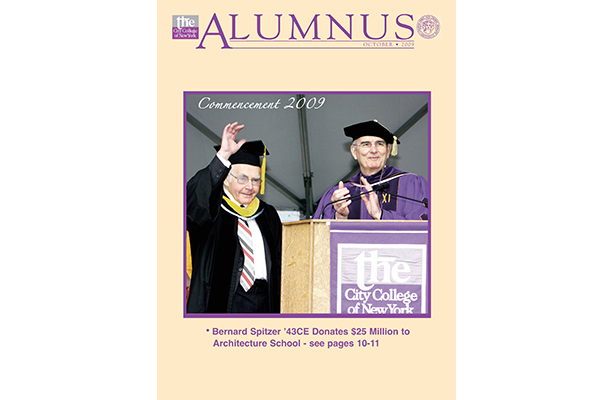History
In 2019, the Bernard and Anne Spitzer School of Architecture (SSA) at the City College of New York (CCNY) celebrated its fiftieth anniversary. On this occasion, the SSA celebrates its past and future as we prepare the next generation of architects, landscape architects, and urban designers as leaders in their fields. The SSA will initiate a series of events, programs, and activities to commemorate this milestone.
Founded in 1969, the SSA has trained thousands of architecture students to promote a sustainable built environment and innovative workforce. The SSA houses over 400 students in its Bachelor of Architecture, Bachelor of Science, Master of Architecture, Master of Landscape Architecture, Master of Science in Architecture, Urban Design (Master of Urban Planning), and Master of Sustainability in the Urban Environment programs.
Deans of the School of Architecture
Bernard P. Spring 1969-1980
Rosaria M. Piomelli 1980-1983
Donald Mintz (Interim Administrator) 1983-1985
J. Max Bond Jr. 1985-1992
Gordon A. Gebert (Interim) 1992-1995
David Bushler and Sam Frank (under the Division of Professional Studies) 1995-1999
George Ranalli 1999-2015
Gordon A. Gebert (Interim) 2015- 2019
Lesley Lokko 2019-2020
Brad Horn (Interim) 2021
Marta Gutman 2021-present (Interim 2021-2022)
Our Story
Although architectural drafting was first taught at the CCNY School of Engineering, architecture became its own field of study on campus after WWII, when veterans returned from military service and pursued professional education.
In 1961, architecture originated as an intra-departmental program within the CCNY School of Engineering. The Board of Higher Education (the predecessor of CUNY) approved a five-year curriculum in architecture leading to the Bachelor of Architecture (B.Arch.) or a four-year Bachelor of Science in Architecture (B.S.). In 1962, the school was renamed the School of Engineering and Architecture. First located in Goethals Hall on the North Campus, the School relocated to the larger Curry Chevrolet Building on Broadway and 133rd Street. This move was made in order to receive accreditation from the National Architectural Accrediting Board (NAAB). Concurrently, the school become autonomous with its own building and facilities, appointed a dean, and appointed additional faculty.
In Fall 1969, the architecture program became an independent school and appointed Bernard Spring (1969-1980), a well-known research architect, educator, and journalist, as its first full-time dean. Beginning with a new curriculum and allied training in Urban Landscape and Urban Design, the school was named the School of Architecture and Environmental Studies (1969-1998). The newly established program, then recognized as the fourth largest in the country, was home to nearly 900 students. In 1980, the CCNY School of Architecture appointed M. Rosaria Piomelli (1980-1983) as dean, the first woman to hold a deanship at any school of architecture nationwide. Dean Piomelli spent much of her career promoting the work of women in architecture. The Curry Garage was home to the School until the fall of 1984 when, with growing enrollment, it moved into a renovated west-wing of Shepard Hall on the north campus under the leadership of newly appointed Dean, J. Max Bond Jr., a prominent African American architect.
In spring, 1995, during a university-wide financial crisis and reorganization, the School lost its independent status and its appointed dean; the restructured program became a unit in the College of Professional Studies. From 1995 to 1998, the school was run by the elected chairpersons Donald Ryder (1995-1998) and Lance Jay Brown (1998-1999).
As a result of the university-wide Board of Trustees’ refusal to ratify the CCNY’s recommendations for its own reorganization, CCNY reaffirmed the Architecture Program’s independent status and hired, in May 1999, George Ranalli as the dean of the School of Architecture and Environmental Studies. One of Dean Ranalli’s first acts was to change, on November 11, 1999, the name to the School of Architecture, Urban Design, and Landscape Architecture (SAUDLA).
In 1999, the School had outgrown its accommodations in Shepard Hall. The College enlisted the world-renowned architect Rafael Viñoly to renovate the Y building on south campus – originally designed as a library in the 1950s – to meet the demands of overcrowding and the changing needs of architectural education.
In recognition of a generous endowment, the School’s name officially changed to the Bernard and Anne Spitzer School of Architecture in the spring of 2009. In the fall of 2009, the SSA moved to its current home, solely dedicated to its programs in a completely renovated 135,000 sq. ft. stand-alone facility including administrative offices, state-of-the-art-the-art classrooms and computer labs, library, and fabrication shop.
Notable Achievements
- The J. Max Bond Center for Urban Futures
The City College Architectural Center was established in the fall of 1980 to provide technical assistance in architecture and planning to neighborhood and nonprofit groups. Reestablished in 2011 under new direction, the architecture center was renamed the J. Max Bond Center on Design for the Just City (2011-2018) honoring the vision and legacy of architect J. Max Bond, Jr. (1935-2009). In 2018, the center was again renamed as the J. Max Bond Center for Urban Futures to advance our collective urban futures toward greater social equity and cultural cohesion. - Sagrada Familia: Gaudi’s Unfinished Masterpiece, Geometry, Construction and Site
From September 29 to May 8, 2015, the SSA housed the first exhibition in the US of Antoni Gaudí’s famous basilica of the Sagrada Familia in Barcelona. Sponsored by the Santander Bank, the exhibit included photographs, architectural models and casts used in the design and construction process. - Building the Modern Gothic: George Post at City College
From February 3 through May 9, 2014, the SSA presented the drawings of architect George Browne Post for the CCNY campus. Organized and curated by Dean George Ranalli, the exhibition highlighted digital reproductions of 45 original illustrations as well as historical photographs from the CCNY Archives. - Solar Decathlon 2011
The City College of New York was one of 20 colleges selected throughout the world to participate in the Department of Energy’s biannual Solar Decathlon Competition. The SSA’s “Team New York” built the Solar Roofpod as a “Plus-Net-Energy” roof pavilion designed to provide local green energy for urban environments. The house placed 17th overall in the 2011 Solar Decathlon competition. In spring 2014, the prototype returned to the SSA’s rooftop.


